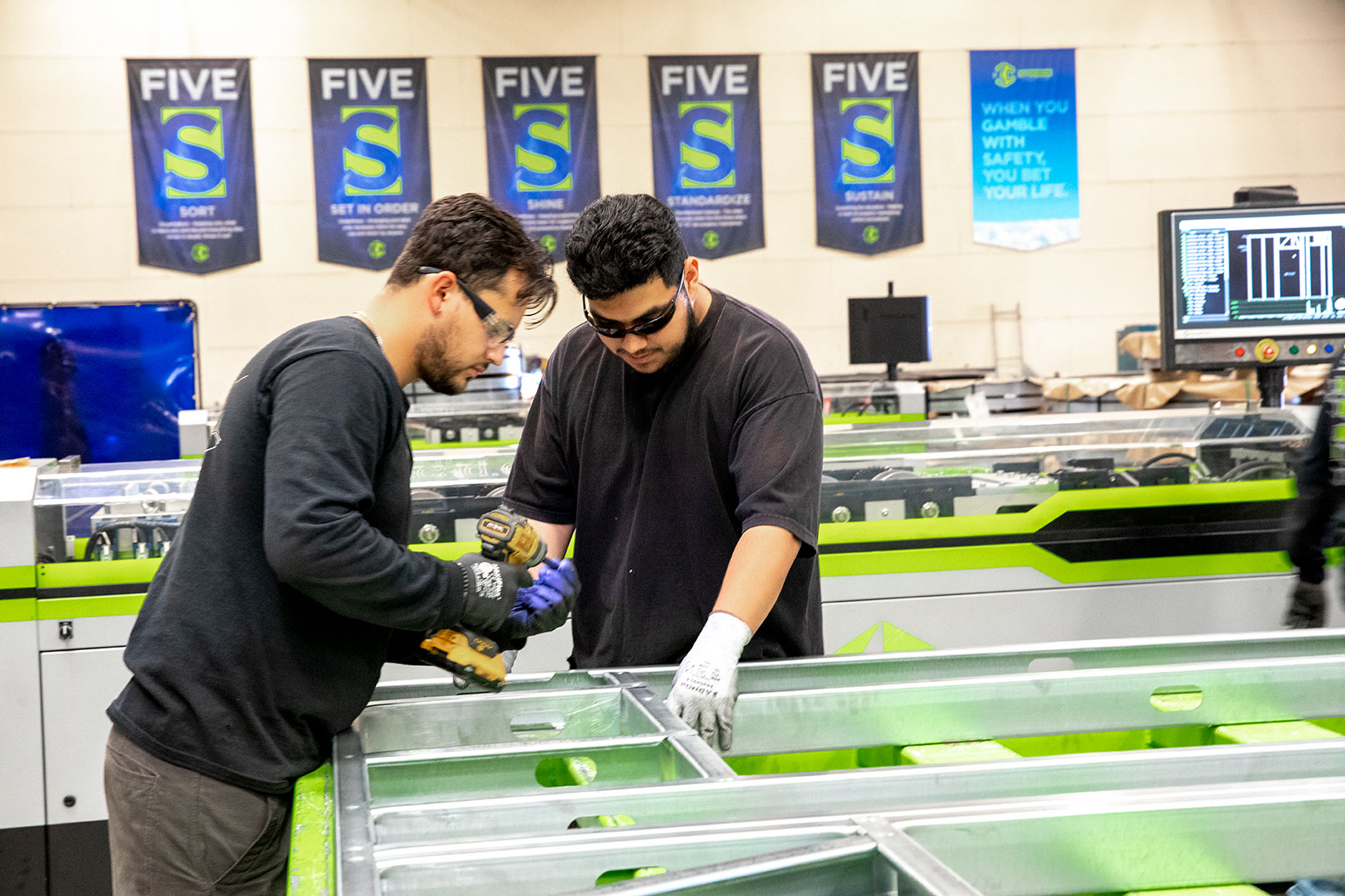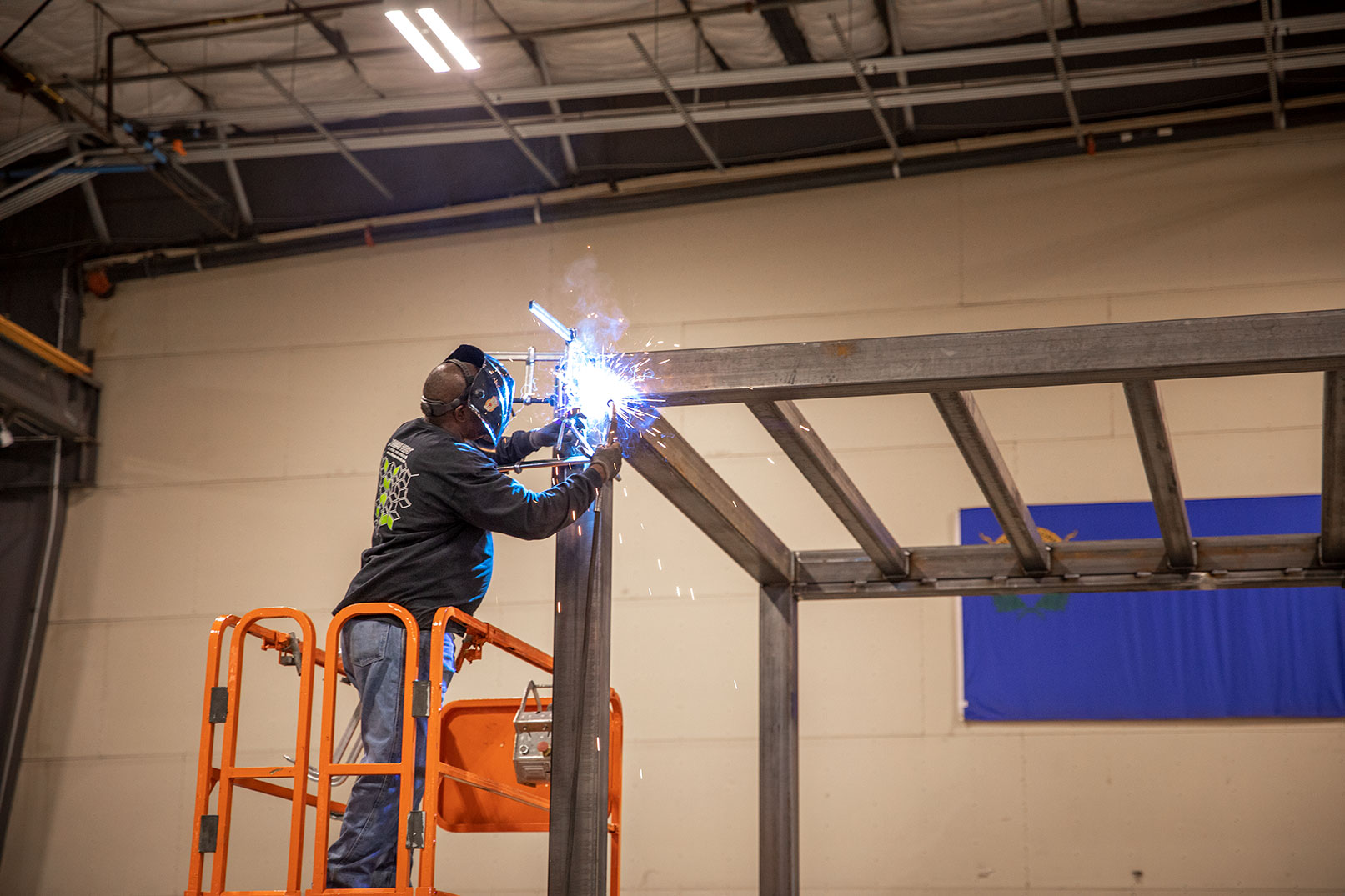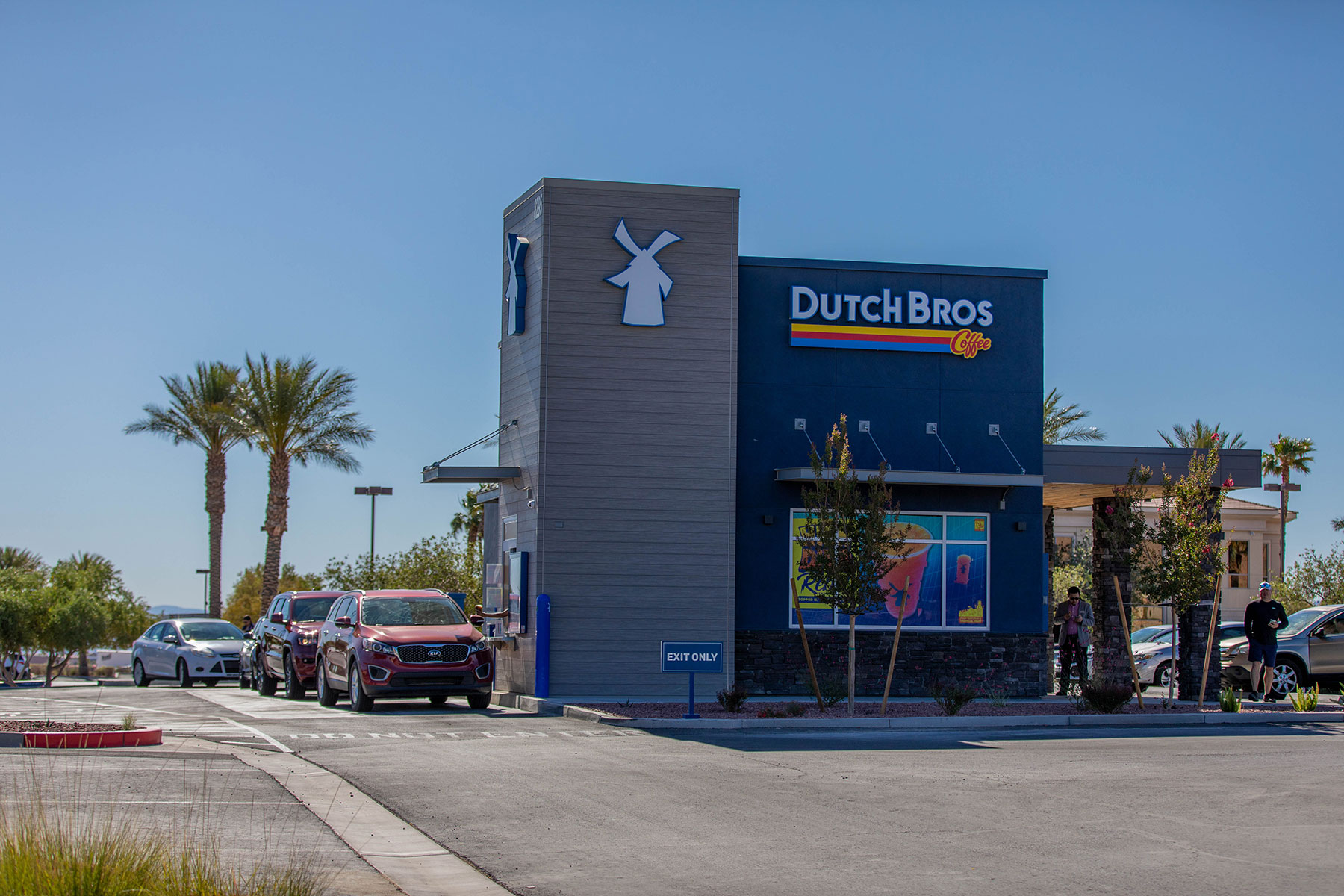What is Modular Construction?
Modular construction is a process in which a building is constructed off-site, under controlled plant conditions, using many identical materials and designing to the same codes and standards as conventionally built facilities – but in about half the time. Xtreme Cubes Steel Moment Frame technology gives greater stability and sustainability to our structures, as does steel siding. Buildings are produced in “modules” that, when put together on-site, reflect the identical design intent and specifications of the most sophisticated site-built facility – without compromise.

GREENER
The factory-controlled process generates less waste, creates fewer site disturbances, and allows for tighter construction.

Great
Flexibility
and Reuse

Great
Flexibility
and Reuse
Steel Modular buildings can be disassembled. The modules are relocated or refurbished for new use, reducing the demand for raw materials and minimizing the amount of energy expended to create a building to meet the new need.

Less
Material
Waste

Less
Material
Waste
When building in a factory, waste is eliminated by recycling materials, controlling inventory, and protecting building materials.

Improved
Air
Quality

Improved
Air
Quality
Because the modular structure is substantially completed in a factory-controlled setting using dry materials, the potential for high levels of moisture trapped in the new construction is eliminated.

FASTER
Construction of steel modular buildings coincides with site work, allowing projects to be completed in half the time of traditional construction.

Reduced Construction Schedule

Reduced Construction Schedule
Because construction of modular buildings can occur simultaneously with the site and foundation work, projects can be completed 30% to 50% sooner than traditional construction.

Elimination of Weather
Delays

Elimination of Weather
Delays
60 – 90% of the construction is completed inside a factory, mitigating the risk of weather delays. Buildings will be occupied and operational sooner, creating a faster return on investment.

Built to Code
with
Quality Materials

Built to Code
with
Quality Materials
Modular buildings are built to meet or exceed the same building codes and standards as site-built structures. The same architect-specified materials used in conventionally constructed buildings are used in modular construction projects – wood, concrete, and steel.

SMARTER
Xtreme Cubes steel modular buildings are built with steel frame construction and many of the same finishing materials and the same building codes and architectural specifications. Once assembled, they are virtually indistinguishable from their site-built counterparts.

Safer
Construction

Safer
Construction
The indoor construction environment reduces the risks of accidents and related liabilities for workers.

Limitless Design Opportunities

Limitless Design Opportunities
Modular units may be designed to fit in with the external aesthetics of any existing building, and modular units, once assembled, are virtually indistinguishable from their site-built counterparts.

Why Modular?
Structurally, modular buildings are generally stronger than site-built construction because each module is engineered to independently withstand the rigors of transportation and craning onto foundations. Once together and sealed, the modules become one integrated wall, floor, and roof assembly. Building offsite ensures better construction quality management. Manufacturing plants have stringent QA/QC programs with independent inspection and testing protocols that promote superior quality of construction every step of the way.
Beyond quality management and improved completion time, modular construction offers numerous other benefits to owners. Removing approximately 80% of the building construction activity from the site location significantly reduces site disruption, vehicular traffic and improves overall safety and security. Highly active businesses such as those in the education and healthcare markets require reduced on-site activity. Offsite construction eliminates many ongoing construction hazards, ensuring a tremendous advantage when building new projects.
For architects, developers, and owners alike, modular construction companies today can work with design and construction sophistication levels that will exceed all expectations, rivaling their site-built counterparts. It is beneficial when exploring the various project delivery methods, offsite construction is chosen early in the design development process, and the project is built around that methodology to avoid redesigning. However, most modular companies can take a site-built design and create a modular version when required, so it’s never too late to explore the possibilities!
Xtreme Cubes steel modular buildings are not just re-purposed shipping containers. They are purpose-built steel construction designed for specific applications. Steel modular in. many cases drives lower insurance costs due to being “non-combustible.”
As owners and designers look for more sustainable designs for improved environmental impact, modular construction is inherently a natural fit. Building in a controlled environment reduces waste through avoidance upstream rather than diversion downstream. This, along with improved quality management throughout the construction process and significantly less on-site activity and disturbance, inherently promotes sustainability: high quality, sustainable, innovative, efficient, cost-effective, and shorter time to completion.


